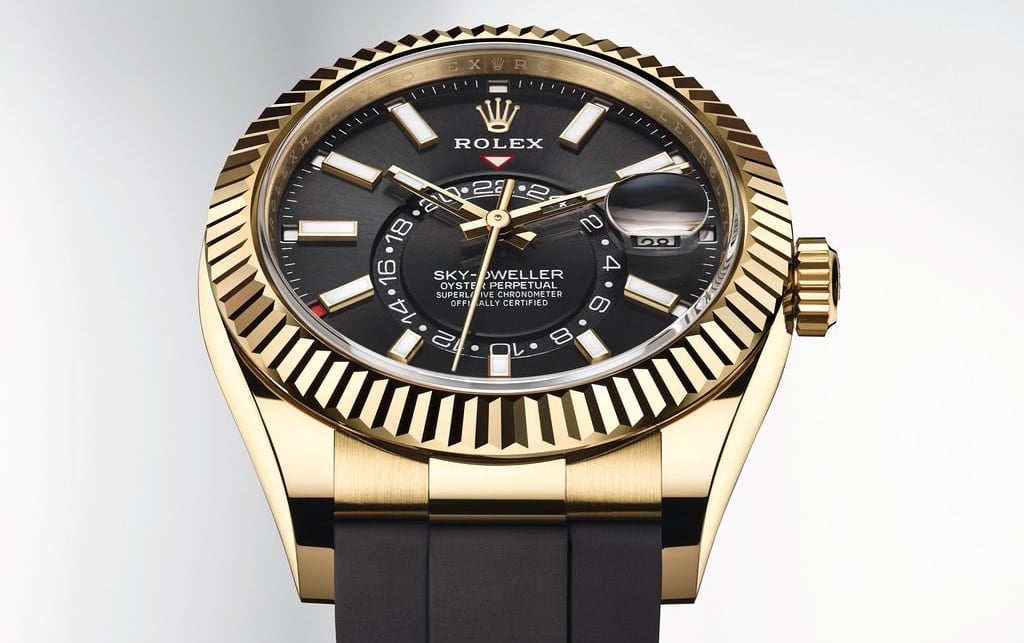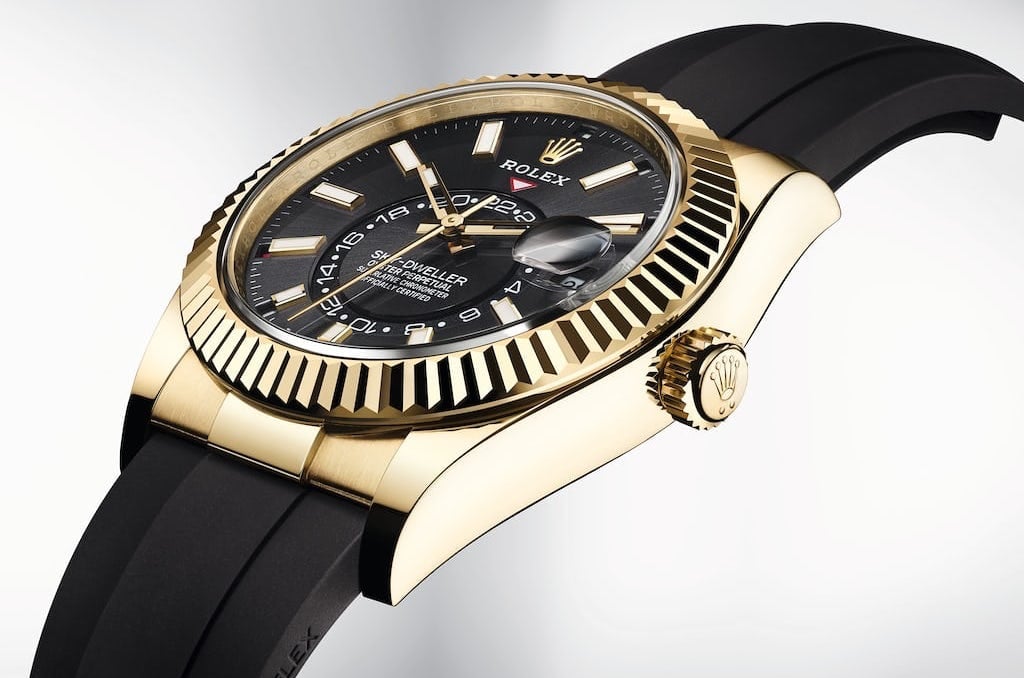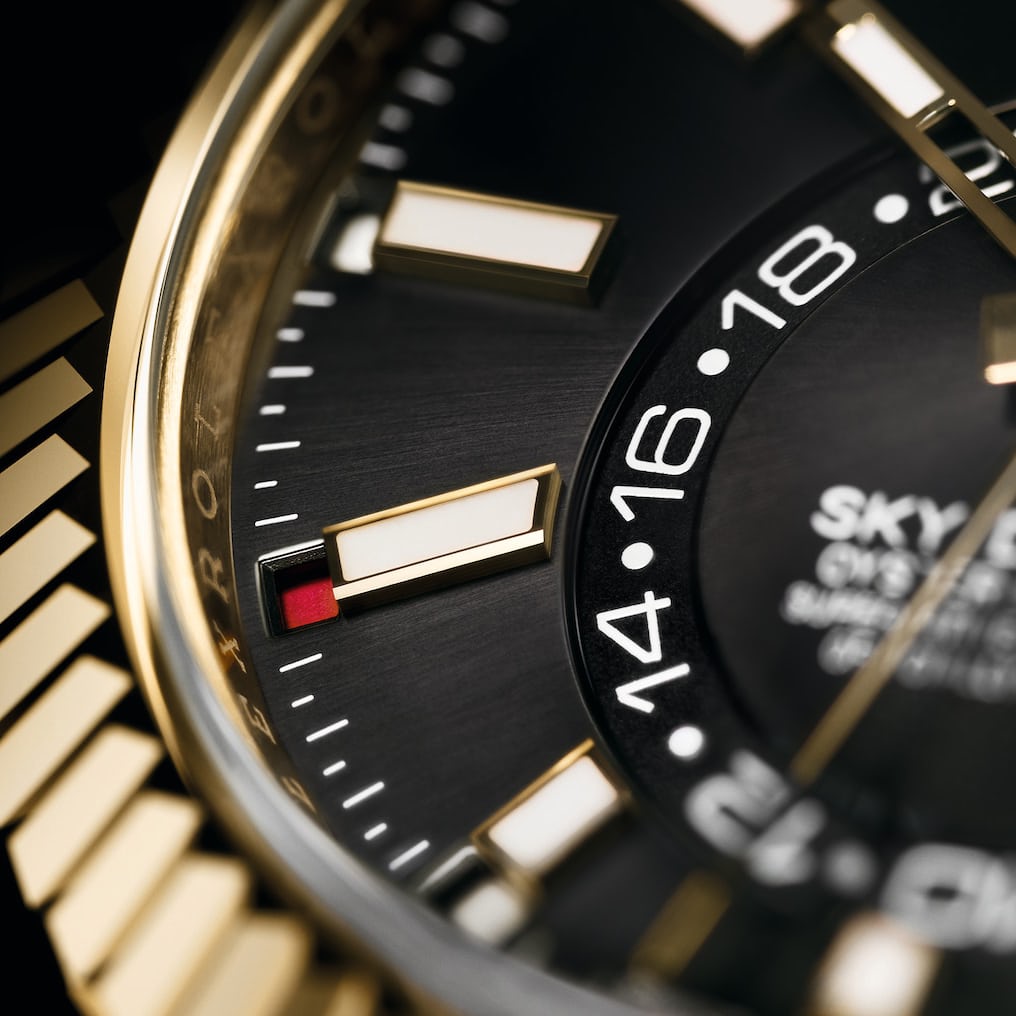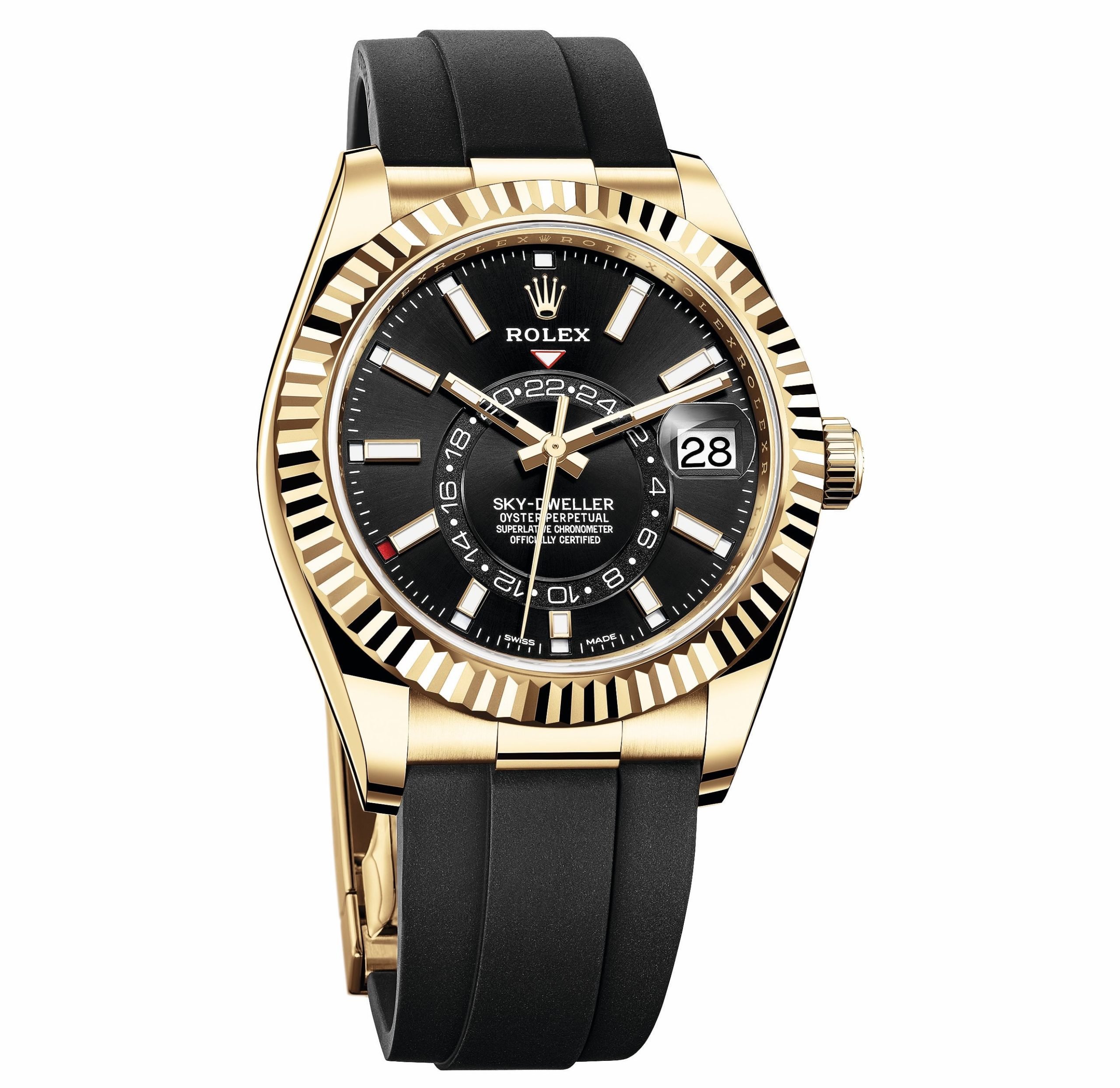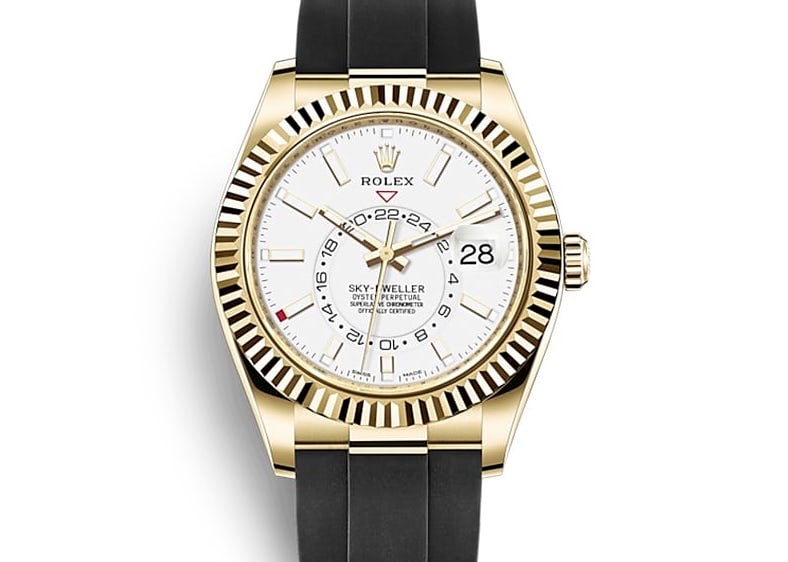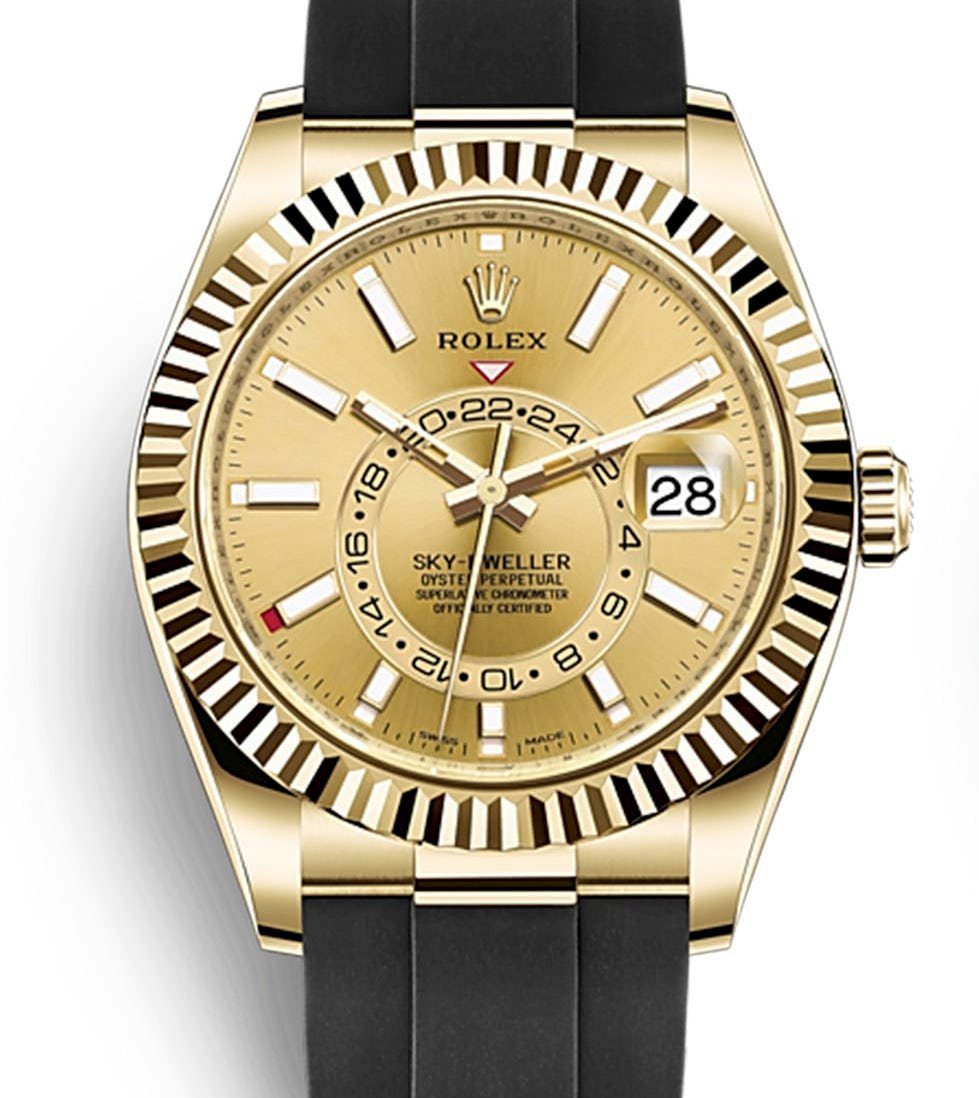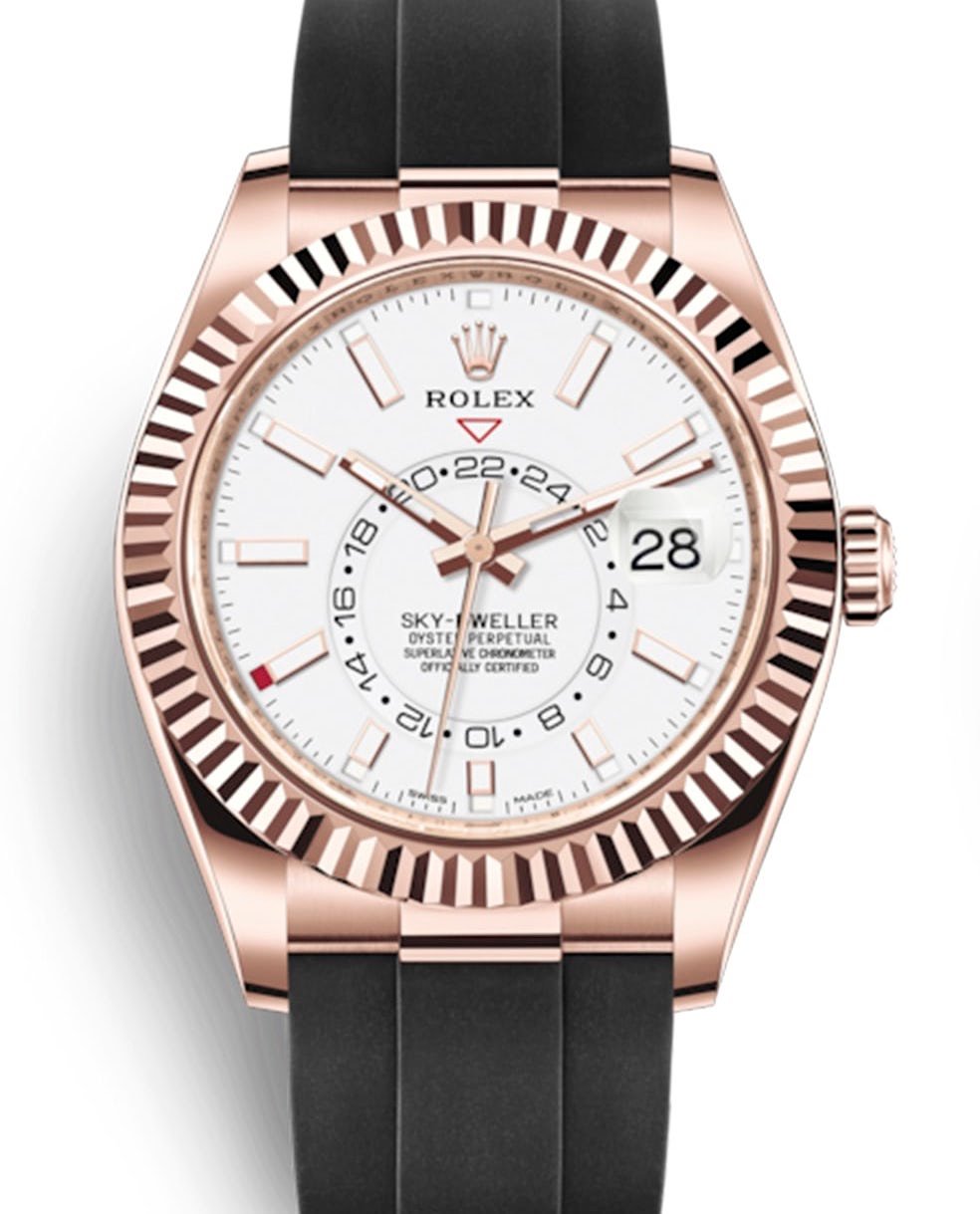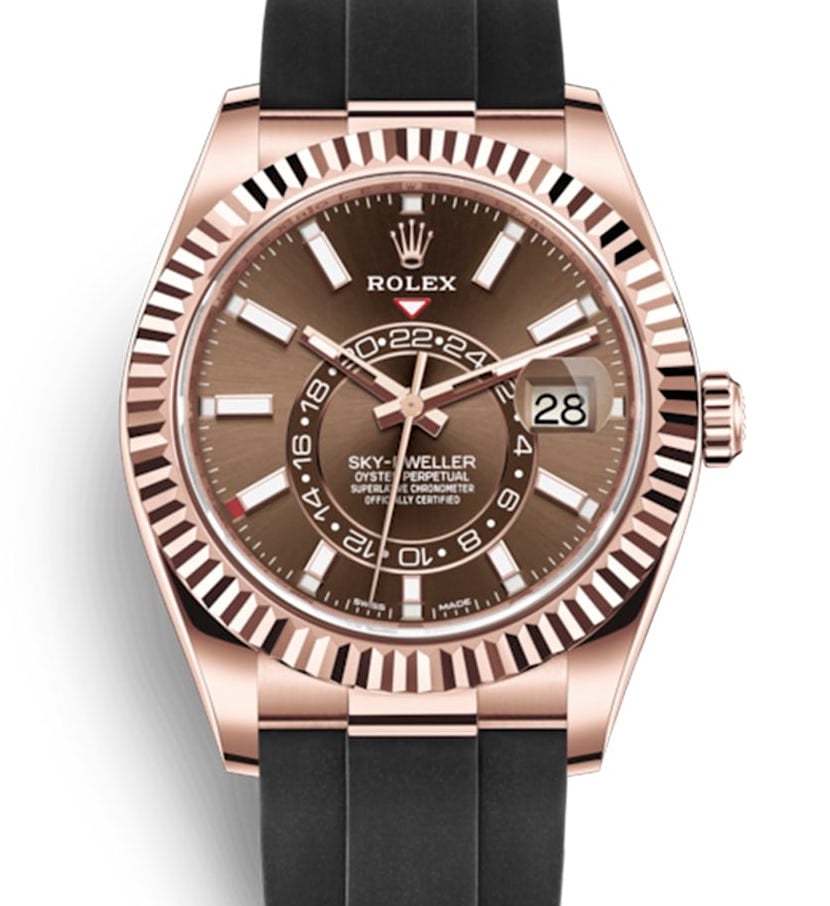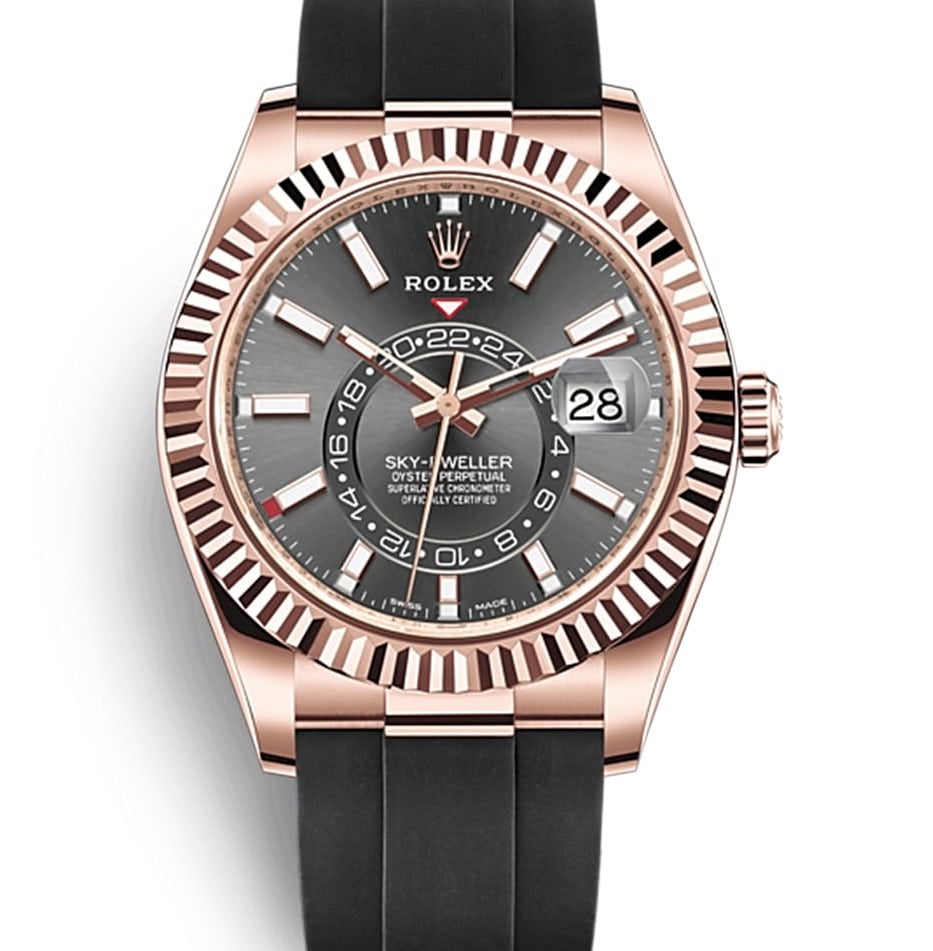Rolex Sky-Dweller Watches With Oysterflex Bracelets
The Rolex Sky-Dweller has, recently, started to get a bit more of the love it perhaps deserved when it stumbled out of the blocks in 2012. For the best part of a decade, the bizarrely complicated love child of the Rolex Datejust and GMT Master II clamored for attention. With an updated dial that saw batons replace the busy numerals used in its early days, the watch began to come of age. Now, with the release of three 18-karat gold models on Oysterflex bracelets, the crown has given a new angle from which to appreciate the ugly duckling that is flourishing into a graceful swan.
We’ve seen the Oysterflex hit the Daytona and Yacht-Master collections before. Despite this rubber “bracelet” looking like a downgrade from a full-metal bracelet (like the classic professional or jubilee models), it has only ever featured on solid gold Rolexes. That’s not something the brand has hidden from or tried to dress-up in any way. It is what it is. A true, and patently obvious expression of luxury. It’s like wearing trainers with a suit. You only do it when you’re beyond the protocols of society. The same is true of a rubber “bracelet” on a solid gold watch head. A few years ago, the idea would have seemed ridiculous. Rolex has made it seem so normal it’s hard to remember why it wasn’t always seen in the same light.
Cha-Cha Glide
Oh, the glide-lock. What a lovely adjustment system it is. These Oysterflex bracelets (which keep their form and firmness thanks to a metal “blade” core are fastened by a buckle that allows for incremental micro-adjustment. Honestly, it’s one of the best in the business. Would I prefer my Sky-Dweller on an Oysterflex over a bracelet? I’m not sure I would, but the buckle system is one of the major lures to this rubbery dark side.
Moving on
While the Submariner, Oyster Perpetual, and Submariner date models all received movement upgrades, calibre 9001 remains as the driving force behind the Sky-Dweller’s incomparable complex dial (for a Rolex). It already boasted a 72-hour power reserve, however, which means it has two hours more juice than either the brand spanking new 3230 or extant 3235.
Color options
So what have we got here? The Oysterflex bracelet only comes in black but looks great against all six available dials. In Everose cases, we have white, chocolate brown, and a particularly suave charcoal sun-burst. I bet that the charcoal will look great against the flashes of red on the dial in natural light. For the 18-karat yellow gold watches, there is a white, a black, and a champagne/gold dial.
So which model is most likely to soar? I expect the most popular piece to be the all-gold one. It feels like the most natural evolution from the Datejust, the design roots of which I find it impossible to escape whenever viewing the Sky-Dweller. If I were to buy one of these however, I would probably plump for the charcoal dial in the rose gold case, because I think the Oysterflex looks better against the more relaxed shade of Everose. I clearly have expensive taste, though, because along with other rosy references, the retail is €37,800. That’s a little higher than the three yellow gold options, which come in at €36,400. Learn more about Rolex and these novelties here.

